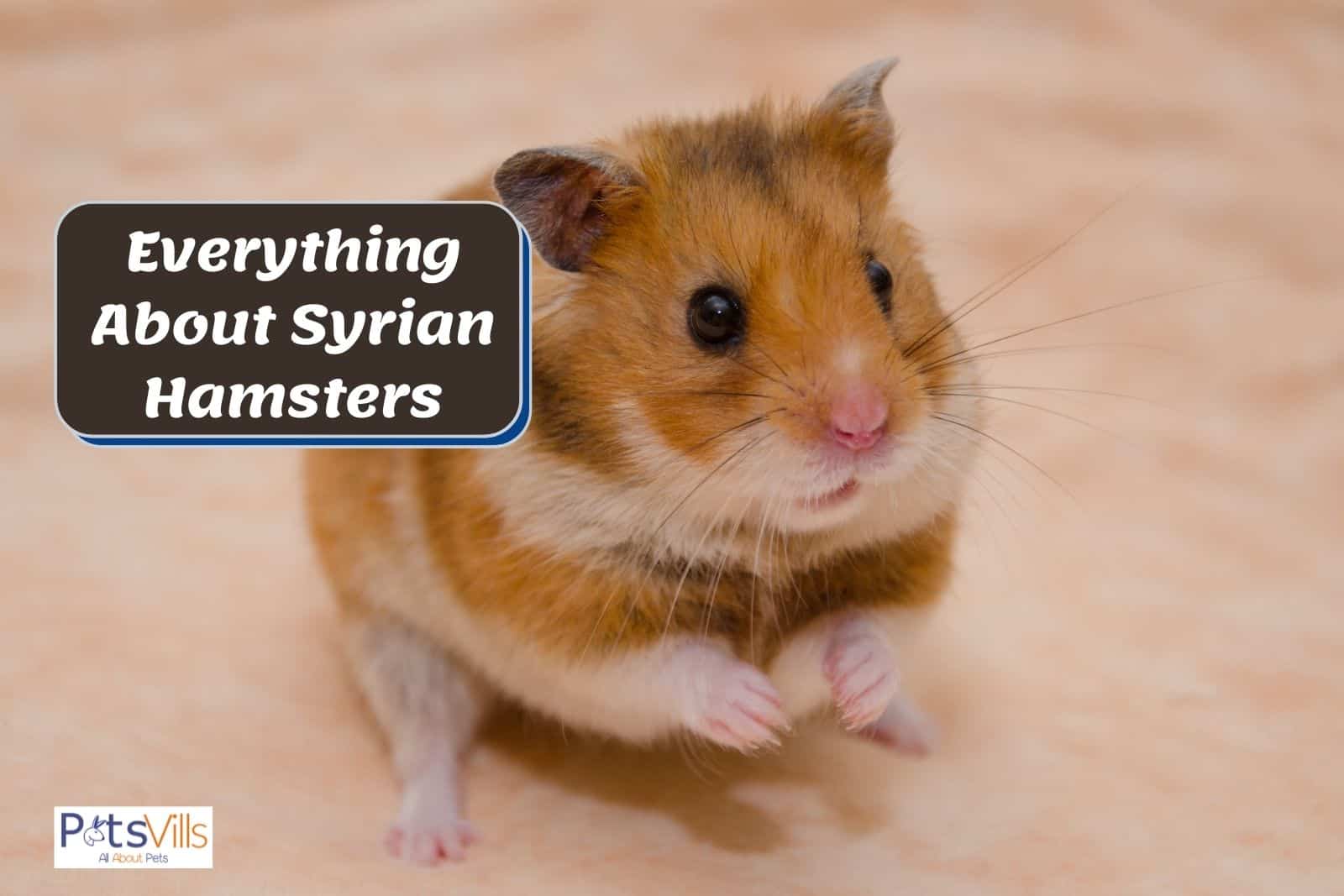Hamsters are popular pets as the first pet in a family.
There are many reasons for this, but one of the primary reasons is the low commitment in terms of years (they typically live 2-3 years) and their quiet daily time requirement (30-45 minutes of attention a day is usually sufficient) [1].
And amongst hamsters, the Syrian Hamster is the most popular breed – largely because of its teddy bear appearance.
In this guide, we will cover everything about the Syrian Hamster, including its many cute looks, how to care for it properly, what toys it needs, and much more.
So whether you’re new to Syrian Hamsters or you’ve had one for years and want to take even better care of, there is further information for you in the guide below.
This post contains affiliate links. We earn a commission if you make a purchase after clicking on our links.
Don’t have time? Check this comparison table of our top faves!
Table of Contents
Where Does the Adorable Syrian Hamster Come From?
The Syrian Hamster, also known as the Golden or Teddy Bear hamster, is the largest and most popular hamster as a pet. This small rodent is known for its golden fur coat, hence the nickname Golden Hamster.
Since being captured by Professor Aharoni in Aleppo, Syria, in 1930 and subsequently introduced as household pets, they have grown tremendously in popularity. [2]
As their name suggests, these adorable critters are native to Syria and broader parts of the Middle East, including Israel.
READ MORE: All About the Chinese Hamster
Teddy Bear Hamster Color and Looks
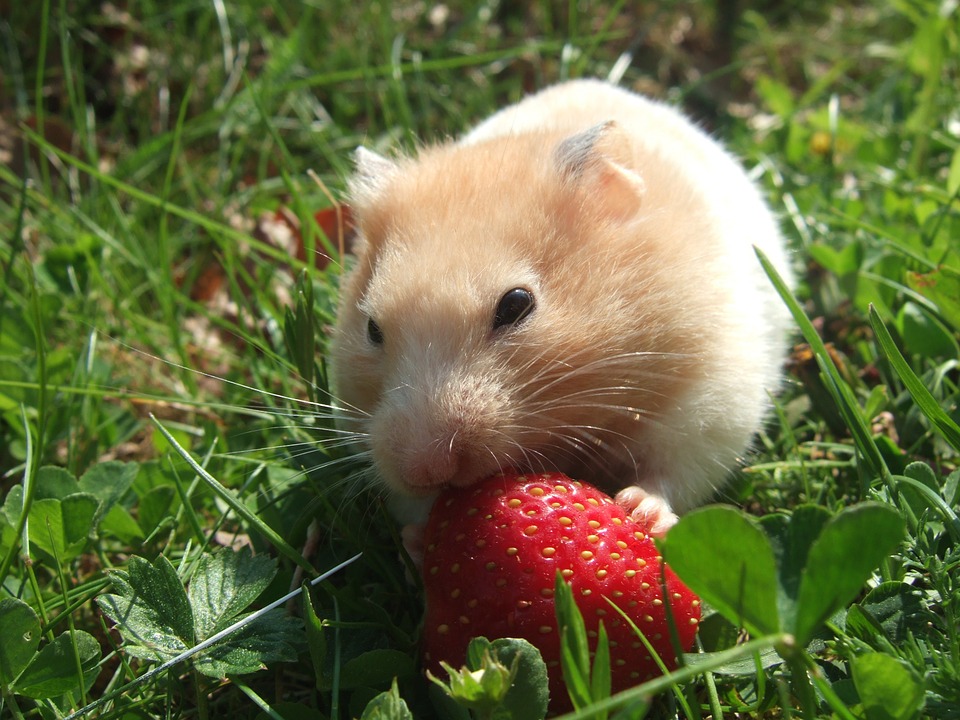
Through breeding, the Syrian Hamster comes in various colors, including white, brown, and gray, with a white belly.
However, the color they usually come in is their “trademark” golden-brown coat, giving them their nickname, Golden and Teddy Bear Hamster.
In terms of body shape, the hamster has a stout, stocky body with a little tail barely visible underneath its fur. [3]
- Syrian Hamsters typically grow to a size of 5-7 inches (12-17cm) in length. This is roughly the same size as a human hand.
- They will weigh 5-7 ounces (120-160g) at that size.
- The Syrian Hamster has large eyes and small tulip-shaped ears covered with fur.
- The jawbone and their ears will often be dark brown.
- The soft cheek pouches are used to store food!
Make sure to check our guide on how to buy a hamster!
Hey there, fellow hamster lovers! Looking for the perfect home for your furry friend? You’re in luck – in this video, we’ll show you the best hamster cages on the market:
Syrian Hamsters as Pets
Syrian Hamsters are generally slow-paced, good-natured, calm, and easy to tame and handle. These factors combined make them relatively easy to train.
Further, their fluffy appearance and teddy bear-like look make them a favorite for many families.
Luckily, Syrian Hamsters are excellent pets for people of all ages, and their slow pace and size make them a perfect handful to handle – not too small or too large, but for the smallest of children.
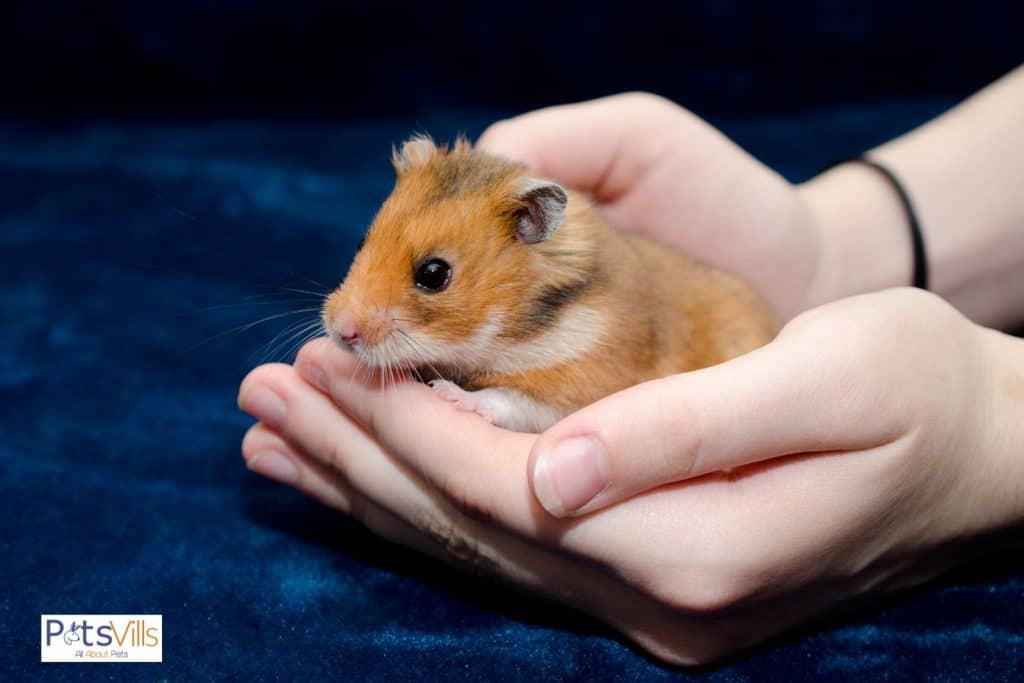
Also, it is a solitary animal that should permanently be housed independently. This makes it easier to keep them as you will never worry about having more than one.
Finally, they are nocturnal, meaning they spend most daylight hours sleeping in their hut.
They become active at night, making them great pets for people who spend daylight hours at work or school.
This allows ample time to bond in the evening before humans head to bed and our hamster heads to its wheel for some good, solid exercise.
The downside is that most minor children usually go to bed too early to play with the hamster.
Syrian Hamster Life Span and Other Facts
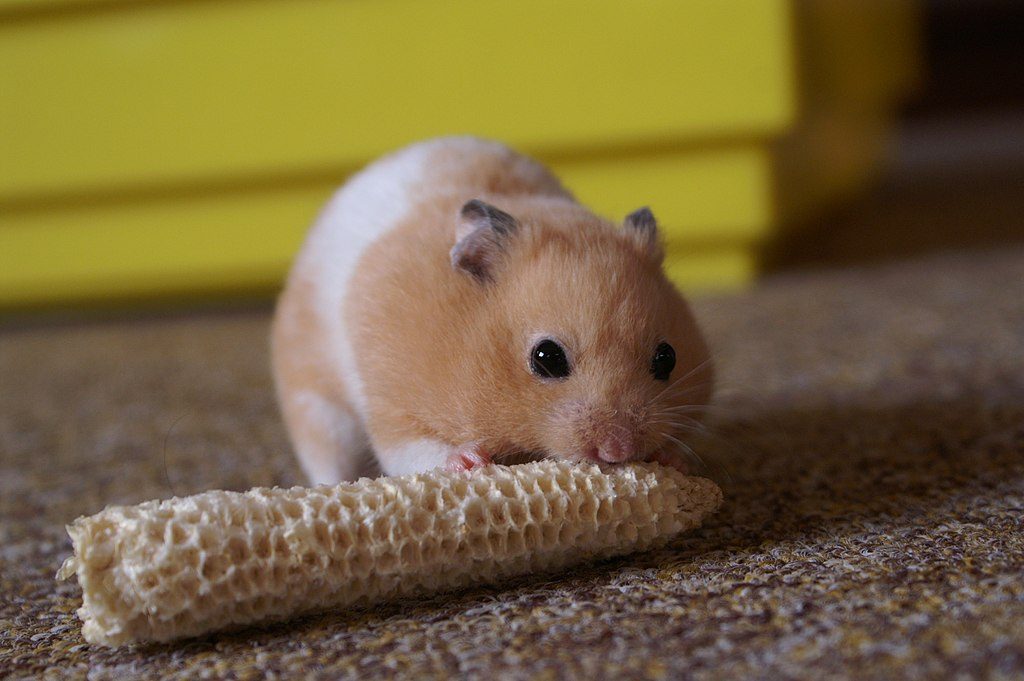
Another attractive feature of the Syrian Hamster compared to other pets is their short life span.
This means you can expect an average healthy Syrian Hamster to have 2-3 years of life expectancy.
While this may sound short, this is especially attractive for first-time pet owners, who will maybe not be ready for a +10-year commitment to a dog.
As such, hamsters will often be the first pet in a family, in which it can be “tested” whether the family is ready for the commitment that a pet is.
Of course, there are many factors influencing the life of a hamster. These include:
- Genetics
- Sickness (make sure not to keep it in a draft)
- Diet & Nutrition
- How much it exercises
- Housing environment
- Level of happiness
The oldest we know, a Syrian Hamster, is 6½ years, but this is the exception from the norm.
Long Haired Syrian Hamster – Be Prepared to Groom It
The first hamsters introduced as pets had short hair, but with some advanced breeding techniques, there are now four coat types: Short, longhaired, rex, and satin.
After the short-haired hamster, the most common Syrian is the typical teddy bear hamster (Angora Hamsters).
Unfortunately, only male hamsters can have long fur, often reaching 3 to 4 inches. This gives it a skirt effect around its bottom, whereas female hamsters keep their typical, fluffy look.
If you get a long-haired hamster, you should be prepared to give it more attention. The long coat will become matted and tangles up quickly, and things will stick to the coat.
To combat this, you can give the coat gentle grooming with a toothbrush or a small flea comb.
Rex Hamsters – The New Hamster
These hamsters are relatively new in North America but have been common in Europe for many years.
They have curly, crimped, and wavy whiskers with a coat typically short and dense. It is difficult to spot the difference between a “normal” Syrian and a rex Syrian.
Satin Syrians – The Shiny Hamsters
Arguably the most beautiful and the shiniest hamster. Satin Syrians have a glossy sheen to their coats, where some fur shafts are hollowed out, which gives an ultra-shiny look.
The Golden Hamster Has Many Coat Colors
Besides the different coats, Syrian hamsters also come in many colors. Below, we listed the most common colors, including gray, black, yellow, and red. Many Syrians will also be a mix of some or all the colors!
Cream Syrians
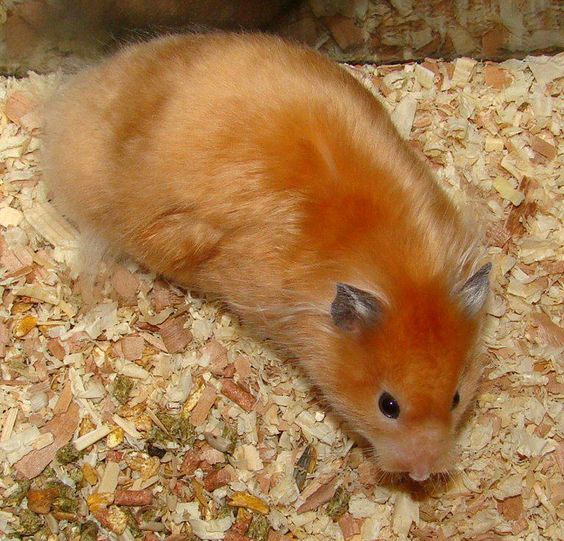
The cream color comes in many sub-varieties and is quite common.
The cream color ranges from sandy to orange-cream, and the paint has further subtypes.
The color of the eye determines these sub-categories.
- Black-eyed creams typically have dark gray ears
- Red eyes creams have flesh-colored ears
Black Hamster
You’ve probably already guessed it – black Syrians have a black coat! Not surprisingly, they have a consistent black coat, with some white on the paws and the belly.
Sable Syrians

When this type of hamster was first discovered in 1975, it was mistakenly labeled a black hamster.
This is because it has a black topcoat and an ivory cream undercut.
Besides this, it has a black belly, black eyes, and dark-gray ears, with ivory cream color around the eyes.
Beige Syrians
The beige Syrians are rare, as they are bred from two types of hamsters that themselves are rare.
A beige hamster is often smaller at birth and may have a kinked tail.
Syrian Hamster Cages
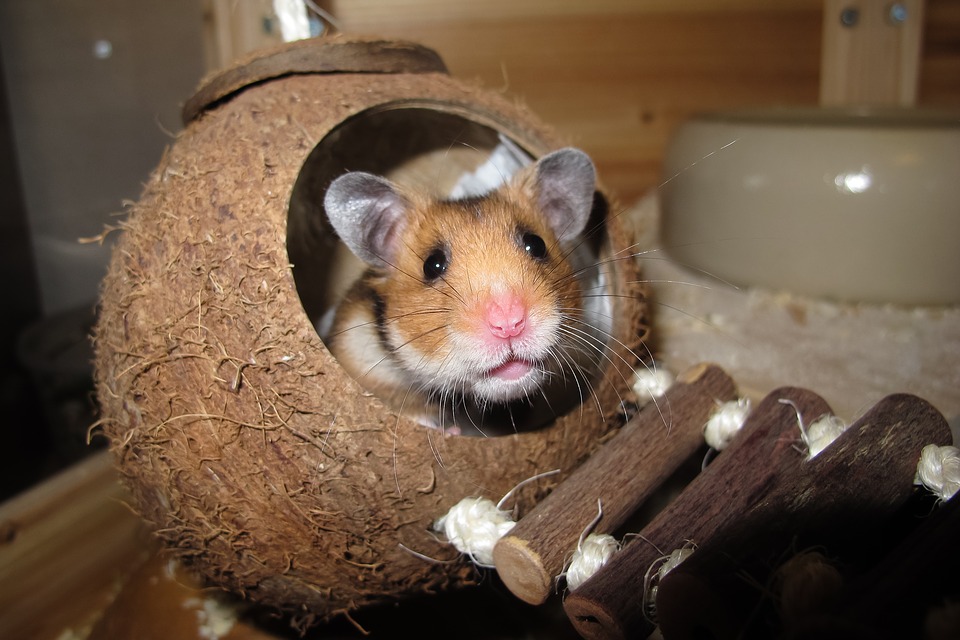
Unlike dwarf hamsters, Syrian Hamsters are highly territorial.
While easy for humans to be around, they should always live in solitary confinement.
In other words, the rule is one cage per Syrian Hamster!
Otherwise, the hamster [4] will get stressed, and fights with other hamsters will break out.
In the most extreme cases, these could be fatal, and at the least, your hamster will get very stressed.
The territoriality of the Syrian Hamster has led to them having a reputation for being nippy. While they can be nippy, they are so no more than other types of hamsters (which is not a lot!)
Syrian Hamster Cages: Bigger is Always Better!
For a Syrian Hamster, you need a large hamster cage with a floor space of at least 360 square inches (30×12 inches) (2,300 square centimeters) and a total area of 2 cubic feet (55 liters).
The space between the bars should not be more than half an inch apart (1cm).
However, this is the minimum cage size, and we recommend having larger hamster cages.
Below we have listed our three top picks for Syrian Hamster Cages:
Table could not be displayed.Check out our guide if you want more in-depth information about hamster cages.
When you have found the cage you want, it’s crucial to have a dedicated place for your hamster to eat. You should get a food bowl in a size that’s large enough to prevent it from tipping over.
We recommend getting one made of ceramic or stainless steel, as these materials cannot be chewed up and are hygienic.
Besides food, your hamster will also need water. We recommend getting a water bottle. This is again to ensure your hamster doesn’t tip it over and suddenly have to do without any liquids.
Finally, you should design an area within your hamster cage where the hamster sleeps and relaxes. There are some adorable options for hamster huts.
Bonus tip: When buying a hut for your Syrian Hamster, it’s vital to check it’s large enough. Many are made for the smaller dwarf hamsters.
Bonus tip 2: If your hamster starts gnawing the cage’s bars, the cage is either too small, has too few toys, or both. If it happens, you should take action immediately.
Teddy Bear Hamster Care
First, basic hamster care is not complicated, and hamsters can become tame if you train them to be so.[5]
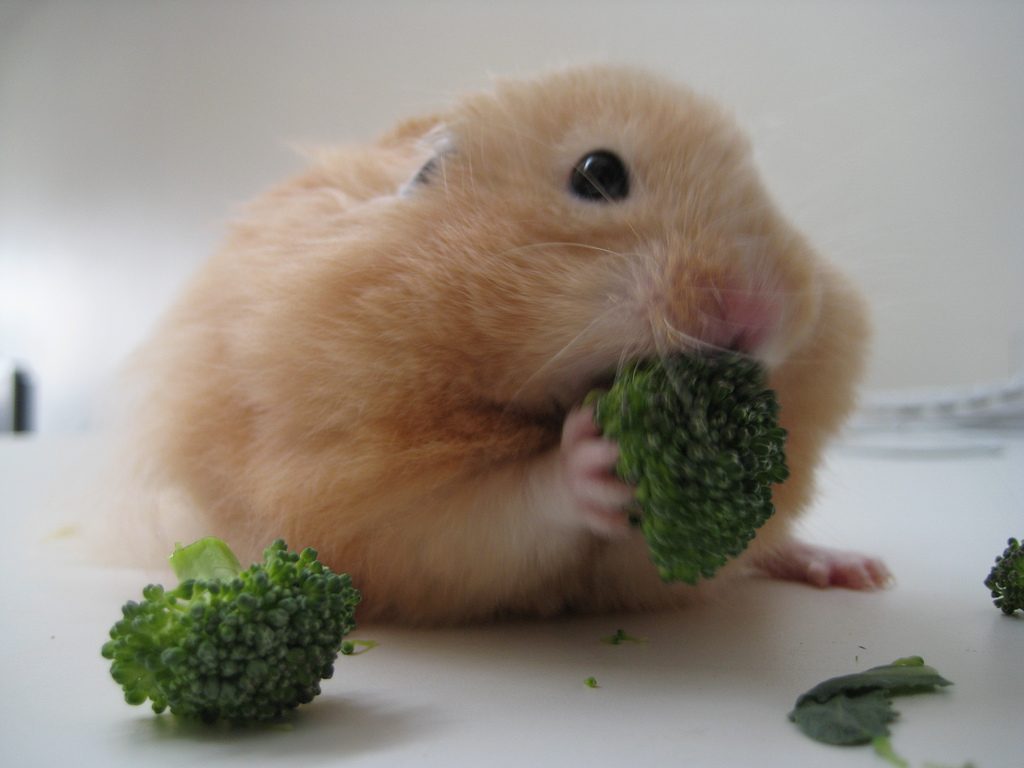
There are five basic steps when it comes to taming your hamster:
- When bringing your hamster home, give it 2-3 days where you don’t handle it and allow it to adjust to its new surroundings
- Start speaking with your hamster and put your hand in the cage. Do not put your hand over your hamster
- Start touching your hamster and make it comfortable with you feeling it
- Start picking up your hamster, cupped in the palm of your hand
- Become best friends with your hamster and make it tame by playing with it daily (or close to it!)
For a more in-depth guide to taming your hamster, click here.
A final note on taming your hamster: You should never wake up your hamster when it sleeps!
Never!
This will lead to a negative response and significantly challenge the taming process.
The other thing to note about Syrian Hamsters is while they are clean animals, you still need to clean the cage.
You should do this once a week where you remove all the bedding, clean the cage, and put new bedding in.
While doing so, it can be beneficial to have a hamster ball or a playpen to keep your hamster in check.
Check out this video about the things that hamsters hate.
Wheels, Toys, and Tubes Your Syrian Hamster Will Love
Besides playing with and entertaining your hamster, you should also make sure it has a lot of toys and tubes to play with.
Some good cheap hamster toys include cardboard boxes, toilet roll tubes, and cereal boxes. The reason for having these toys is that your hamster’s teeth are constantly growing, which helps keep them at a reasonable length.
Also, we recommend having some wood in the cage. It can gnaw on at all times.
Mimic Your Hamster’s Natural Instincts With the Hamster Wheel
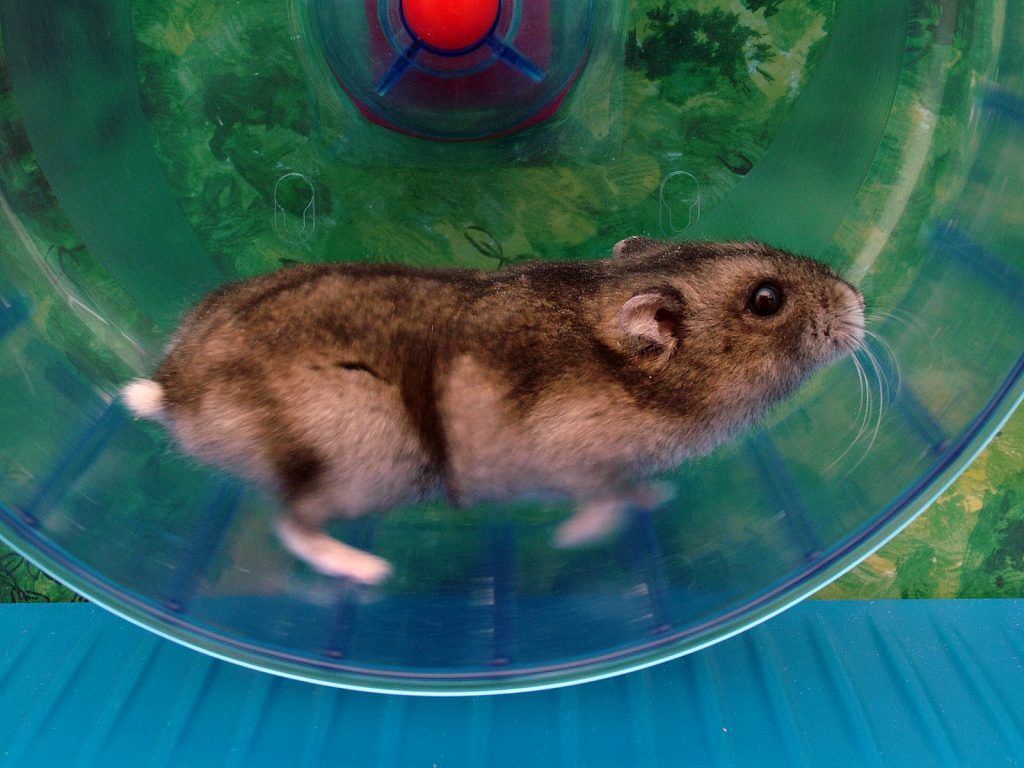
Besides, something to gnaw on your hamster needs lots of exercises!
That’s why it’s fundamental that you invest in a hamster wheel.
In the wild, hamsters run all night to find food, and we need to mimic that in their cage – and that’s where the hamster wheel comes in.
When getting a hamster wheel, two things are crucial:
1: Get a plastic wheel. Metal wheels are made with rungs (like a ladder). Your hamster can fall through the traps and hurt itself.
Further, they often have sharp edges. To avoid this, get a plastic wheel made of one-piece molded together.
2: Make sure it’s large enough! Your hamster should not run with an arched back. The wheel should be at least 8 inches (20cm) in diameter for a Syrian Hamster.
Below you can see our three recommended options when it comes to hamster wheels:
Table could not be displayed.3 Amazing Syrian Hamster Toys
You should consider adding some hamster toys when your hamster cage has a hut and a wheel.
There are essentials to prevent boredom in your hamster and help pique its curiosity, and more importantly, having something to gnaw on will help keep its teeth in check.
You can easily find something in your home, such as cardboard, to chew on from either cereal boxes or toilet paper rolls.
While these are often excellent options, there is also a risk these can contain residual chemicals that are not good for your hamster.
And that’s why we recommend getting “real” hamster toys unless you are sure about your household items not containing anything that can be unhealthy for your hamster.
Stimulate Your Hamster’s Curiosity With Wooden Ladder bridges
Our favorite hamster toy is, without a doubt, the wooden ladder bridge. We love these because you can bend them to make any shape your hamster loves.
Further, as it’s made out of wood, your hamster can chew on it – but don’t worry, it can chew on these for many months before the wood spoils! Click here to see our favorite hamster bridge.
We recommend getting a few of these. This ensures you can permanently alter the look of the cage, stimulating your Syrian’s curiosity.
Your hamster will love chilling and Swinging from this Hamster Hammock
Looking for a new and unique way to spoil your hamster? Check out this hamster hammock! Perfect for keeping your little one comfy, this hammock will be a hit.
Made of soft fabric and sturdy frame, it’s perfect for any small animal lover. So why wait?
One or two of these in the cage will give your hamster a lot of ground to play on. Here’s a Hammock we’ve had great experiences with.
Jetec 2 Pieces Hamster Hammock Soft Bed Small Pet House Animals Hamster Hanging House
Food, Diet and Treats For a Healthy and Varied Syrian Hamster diet
Our little Syrian hamster friends eat plants, seeds, and meat (insects) like us humans.
Besides the insects, this is mimicked in the hamster food you can get.
However, there are many types of hamster food out there, and it can be challenging to figure out what is best. [6] Generally, there are two types of food you can buy:
- Seed Hamster Food
- Pelleted Hamster Food (our preferred choice!)
Whatever type of food you buy, you should ensure it has nuts, grains, and seeds with a nutritional balance of 3-6% fat and 12-15% protein.
Below we have listed our top three picks for Syrian Hamsters
Seed food: The Historical Option
Historically, seed hamster food has been the primary food choice when getting a hamster. While it can be okay, it does risk your hamster being picky, only eating its favorite seeds.
This will lead to a diet not being balanced, and worse, your hamster will not get all the necessary vitamins.
Thus, if you go with seed hamster food, ensure the food bowl is empty before giving it more food.
Oxbow Essentials Hamster Food and Gerbil Food: Ensures Your Gammy Gets the Vitamins It Needs
Healthy hamsters need a balanced diet that includes proteins, fats & carbohydrates.
Oxbow Essentials has ingredients for an active lifestyle that gives your pet energy to perform daily functions while supporting their immune system health!
Made with antioxidants and prebiotics, which helps keep those pesky picky eaters happy in their natural habitat of yours – the cage or bowl
We have had a great experience with this type of hamster food.
Your Hamster Will Indulge in These Treats
Like humans, “normal” food should be the main part of a hamster’s diet.
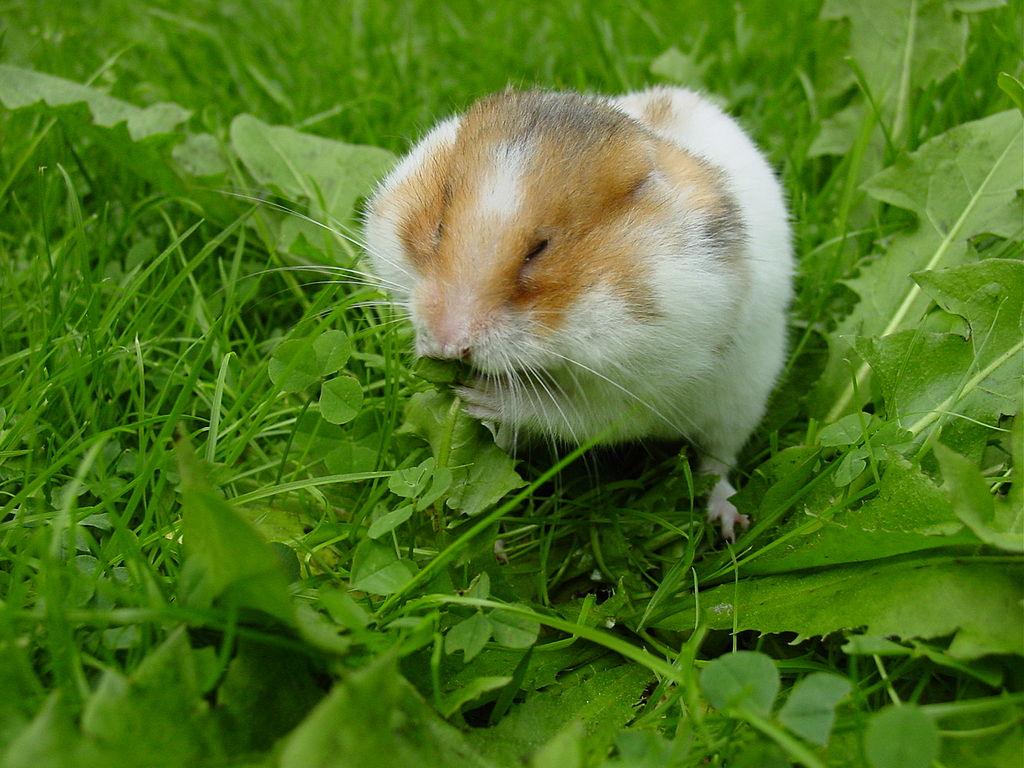
With that said, and again, just like us, humans, hamsters love treats. Luckily, most common household greens can also be used for hamster treats, and hamsters especially love things such as:
- Cabbage
- Spinach
- Banana
- Carrots
You can also give many other snacks; we have covered hamster snacks extensively here. We recommend giving your hamster a treat once or twice a week.
The link above is suitable for reference, but if you don’t have time for it now, we want you to remember: Do not give your Syrian hamster high-acid foods, including citrus and oranges.
Take a look at this video about Healthy Treats Your Hamster Will Love!
Facts About the Syrian Hamster
Syrian Hamsters in the Wild
You probably guessed that Syrian Hamsters are from Syria, hence the name. In this hot country, they burrow deep into the ground to have a sufficiently temperate home – and they have been shown to dig as far down as 11 yards (10m)!
This may sound look a lot for such a small mammal (and it is!), but Syrian hamsters are excellent diggers.
In their burrows, they have sleeping arrangements, “rooms” for storing food, and a blind-ending branch for urination. Often the caves will even have multiple entrances.
Finally, these deep burrows also keep the hamster safe from other predators.
Just like when it’s housed as a pet in the comfort of your home, the Syrian Hamster lives a solitary life in the wild.
As for life expectancy, it is a little shorter in the wild. This is primarily due to the threat from other predators and more infrequent access to food and water.
What to Do if Your Hamster Gets pregnant (babies on board)
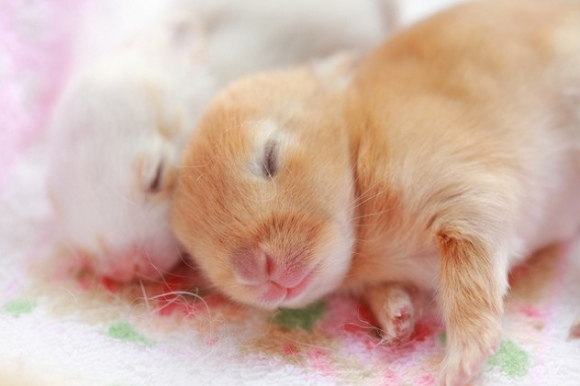
Having hamster babies can seem like a good idea when you grow fond of your Syrian hamster. [7]
However, while it may seem like a good idea, we recommend not attempting to have hamster babies.
This is due to the American Humane Society advising against it. [8]
The main reasons for doing so are:
- Syrian hamsters may eat their babies
- It is hard to find a new home for the baby hamsters (a Syrian will typically have 3-7 litters) and major pet suppliers like Petsmart and Petco do not purchase or acquire small animals from private owners
With that said, if you have Syrian hamster babies or your Syrian hamster is pregnant, here are the most important pointers:
- Beef up your hamster’s diet by adding calories and more protein
- Clean the cage and remove the hamster wheel and other toys so the baby hamsters don’t injure themselves.
- Leave the cage for the last couple of days before birth. If a baby hamster gets your scent, the mother may reject it
- Labor usually takes 1-2 hours with 15-30 minute intervals between the small pups coming into our world
- Do not disturb or enter the cage for at least two weeks. This again concerns the mother potentially rejecting the babies if they get the human scent.
- Make sure there is enough food and water
- Separate the hamsters at the age of 4-5 weeks
We recommend reading our extensive guide for more information on hamster babies.
Syrian Hamster Breeders / Adoption / Price
Syrian Hamsters generally cost between $5-$20 and, as such, are relatively cheap to acquire.
However, before going to a pet store, we recommend adopting a hamster instead. Our two main reasons for advising are:
1: Shelters are generally better at caring for hamsters than pet stores.
For example, many pet stores will have Syrian Hamsters in cages with other hamsters, which they should be under no circumstances.
This does not happen at shelters and humane societies, where the animal’s well-being is a top priority.
2: Shelters will sex the animals to ensure no one accidentally gets pregnant.
Again, this is not necessarily the case at pet stores (it is hard to determine the sex of a hamster), and there have been stories where people have brought home a pregnant hamster from the pet store.
For more on hamster adoption, you can check our hamster adoption guide right here.
Syrian Hamsters and Hibernation
As we’ve already mentioned, Syrian Hamsters are from Syria…
It is hot during the day, but most of the country is a desert. It can also get cold at night. If it gets cold, a Syrian Hamster might go into hibernation.
As a rule of thumb, a Syrian can easily cope with temperatures between 60-78f (15-25c) without any adverse effects.
However, if it drops below these temperatures in the room its cage is in, it may go into hibernation.
But why does my hamster need to hibernate?
Hibernation is a brilliant ability of some animals. Going into hibernation is when cold weather typically signals less food.
Instead of having the same calorie intake when there is less food, some animals can shut down to a minimum calorie need. The most well-known example is bears, but hamsters have the same ability.
If your hamster goes into hibernation, you might mistake it for dead, as its breathing will be prolonged and almost motionless. Further, it will not react to sound, light, or touching.
So how do I wake my Syrian up from hibernation?
It was only a half-truth. It won’t react to being picked up. If you pick it up and handle it gently, warming and stroking it, you wake it up.
This tells the hamster, “yay, it’s Springtime” and its organs will “wake up” again.
Syrian Hamsters and Their Ever-Growing Teeth
Hamsters are mammals that belong to the rodent family. In short, being a member of the rodent family means its teeth are constantly growing.
In other words, hamsters are born with teeth that keep growing throughout their lives.
Where humans brush our teeth, hamsters care for their teeth (and keep their size in check) by gnawing on stuff.
If there isn’t anything to gnaw on in the cage, the hamster will start gnawing the cage instead – a sure sign that something’s wrong.
Check out this video on caring for a hamster’s teeth.
Syrian Hamsters vs. Dwarf Hamsters
When we decide to get a hamster, the choice is typically between a Dwarf hamster vs Syrian.
So what are the main differences between these two types of hamsters?
- Syrian Hamsters are more giant than dwarf hamsters.
- The Syrian Hamsters come in many more varieties in terms of pattern and colors compared to dwarfs.
- Further, their coat can be both long and short.
- Syrians should always live alone, whereas dwarf hamsters can also live in same-sex pairings
- Syrians are slower
- Syrians can remain tame even if they haven’t been attended to for a few days. Dwarf hamsters need attention daily.
Conclusion
Congratulations on making it to the end of our complete guide to caring for Syrian hamsters! We hope you found this article helpful and informative.
As we discussed, Syrian hamsters are adorable and fun pets requiring specific care and attention. By providing them with a healthy diet, comfortable living space, and plenty of love and attention, you can help them live their best life.
Remember, every hamster is unique and may have individual needs, so observe your pet and adjust your care accordingly.
Whether you’re a new hamster owner or a seasoned pro, we hope this guide has provided you with valuable information to help you give your furry friend the best care possible.
Thanks for reading, and don’t forget to give your Syrian hamster some extra love and treats today!
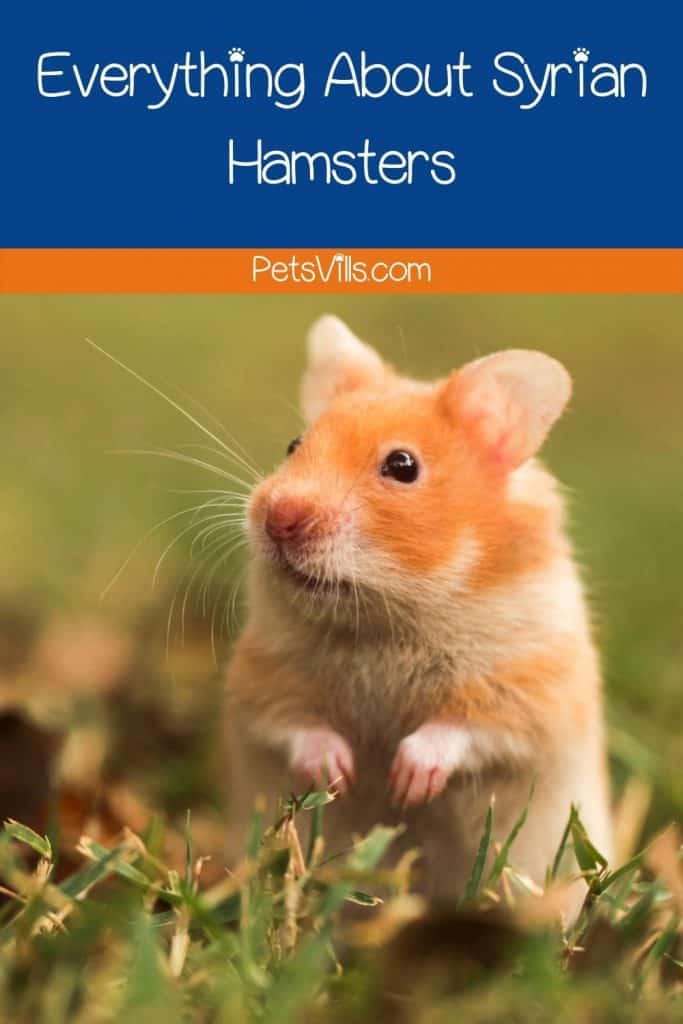
What do you love most about Syrian hamsters? Please share with us below.
Resources
1. How Much Time Do You Spend With Your Hamsters? – Behaviour & Personality, Handling & Taming. Hamster Hideout Forum. Accessed March 25, 2022. http://hamsterhideout.com/forum/topic/20882-how-much-time-do-you-spend-with-your-hamsters/
2. Your Hamster May Have Surprising Origins. Animals. Published March 7, 2014. Accessed March 25, 2022. https://www.nationalgeographic.com/animals/article/hamsters-syria-aleppo-pets-animals#:~:text=In%20fact%2C%20there%20are%2026
3. Syrian Hamster – an overview | ScienceDirect Topics. www.sciencedirect.com. Accessed March 25, 2022. https://www.sciencedirect.com/topics/immunology-and-microbiology/syrian-hamster
4. Hamster – an overview | ScienceDirect Topics. www.sciencedirect.com. https://www.sciencedirect.com/topics/biochemistry-genetics-and-molecular-biology/hamster
5. Hamster Care 101: How to Care For Your Hamster | petMD. Petmd.com. Published April 19, 2018. https://www.petmd.com/exotic/care/evr_ex_hm_how-to-care-for-your-hamster
6. petMD. What Can Hamsters Eat? Carrots, Grapes, Tomatoes, and More | petMD. Petmd.com. Published March 10, 2016. https://www.petmd.com/exotic/nutrition/evr_ex_hm_what-can-hamsters-eat
7. Breeding and Reproduction of Hamsters – All Other Pets. MSD Veterinary Manual. Accessed March 25, 2022. https://www.msdvetmanual.com/all-other-pets/hamsters/breeding-and-reproduction-of-hamsters#:~:text=Pregnancies%20usually%20last%20from%2016
8. Is a hamster the right pet for you? The Humane Society of the United States. http://www.humanesociety.org/animals/hamsters/tips/hamsters_as_pets.html
Alina Hartley is a small-town girl with a ginormous love of bearded dragons. It all started with Winchester, a baby bearded who was abandoned at the shelter by his former owners because of a birth defect that caused one front leg to be shorter than the other. Alina originally went to the shelter looking for a guinea pig, but one look at Winchester and it was love at first sight. From that day on, Alina has dedicated her life to learning everything she can about bearded dragons. She loves helping new beardie parents start their incredible journey with these magnificent reptiles.
Follow her on:
LINKEDIN
TWITTER.
Read her latest articles HERE
Learn more about her HERE.

